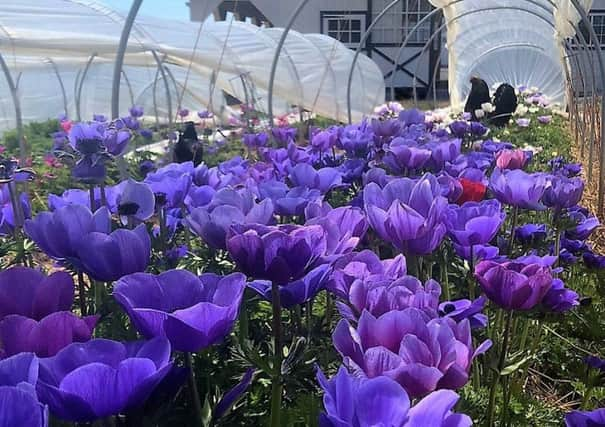DAERA Notes: Horticulture


Nutrient availability in the soil does not necessarily translate into nutrient uptake by the tree. Often there is also a lack of association in nutrient level between tree canopy and fruit. To increase yield and post-harvest fruit quality it is essential to regularly correct the level of the most limiting nutrient. Regular soil, leaf and fruit analyses are therefore needed.
Before you start applying fertiliser it is important to conduct and interpret your soil analysis. The ideal pH range for optimum nutrient availability is 6.0-6.5. If the pH is low the use of limestone is reasonable as long as the calcium level is below 4000 ppm, otherwise more than one application of potassium carbonate liquid is recommended. Potassium carbonate liquid has no direct impact on calcium level. If pH is within or slightly above the ideal range and calcium level is low use gypsum, which does not impact on pH, at 250 kg per hectare on herbicide strip. Alternatively a moderate application of organic acid mixtures is recommended which may activate soil reactions and stimulate nutrient uptake. If pH is high lower the level by applying sulphur or organic acid mixtures at higher rates.
Advertisement
Advertisement
The compound fertiliser and rate of application depends on the nitrogen, phosphorus and potassium levels in the soil. Some sulphur may also be needed. Usually fertilisers with high nitrogen content are needed. The first application should have been applied at the end of March followed by a second one after petal fall.
Foliar applications are needed during flowering, fruit set and leaf expansion. Ideally boron, molybdenum and zinc are needed from bud burst until the end of flowering. Calcium is usually needed until pre-harvest but is highly important from bud burst to petal fall for fruit tissue calcium levels. Zinc is needed at green cluster stage. Manganese and iron can be applied after petal fall for leaf expansion. Always refer to the product label and/or ask your top fruit adviser.
Cut flowers
At a NIFFA meeting in February, Lyndon Mason (Project Manager at the AHDB cut flower research centre) reviewed recent AHDB cut flower research and identified a range of promising cut flower varieties. In consultation with NIFFA members, the direction of knowledge technology transfer cut flower work at CAFRE was agreed. The following investigations will be carried out at the Horticulture Centre, Greenmount Campus.
An evaluation of over 20 different sunflower cultivars under glass, an assessment of 10 herbs for use in scented bouquets, a sequential planting of antirrhinum and an autumn crop of chrysanthemum. Work will continue with scented pinks, a range of annual cut flowers for use as fillers (Ammi, Dacus), production of decorative seed heads (Nigella, Scabious) and novel flowers (Lupin, Celosia and Amaranthus) under protection.
Advertisement
Advertisement
The need to carry out more work in open ground cut flower production was identified as a priority. Different cut flowers will be tested for their suitability to be grown in Northern Ireland (sunflower, larkspur, cosmos and zinnia).The same crops will also be grown in a caterpillar tunnel, a low cost structure that minimises damage to flowers by wind and rain. Foliage is another area of great interest and a selection of berried material (Rosa, Symphocarpus and Callicarpa) and foliage material (Ilex, Cotinus) will be demonstrated at Greenmount. A range of willow species, selected on the basis of their attractive catkins and/or stem colour, will also be grown at Greenmount Campus.